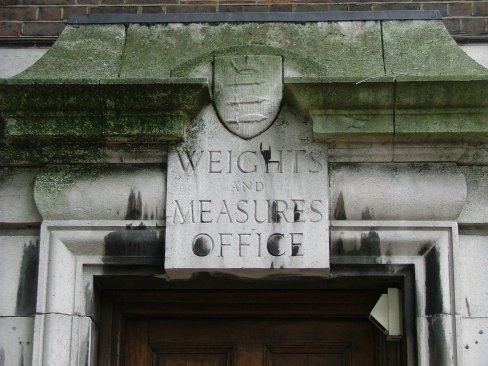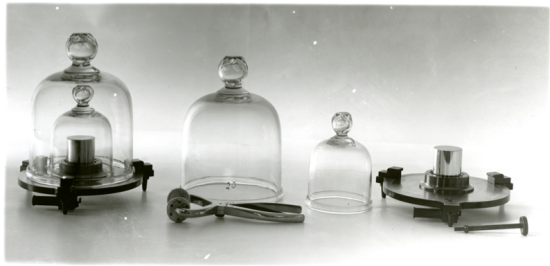In my last post, I told you about how scientists measure amazingly cool things that can be vastly different in size, like elementary particles or very distant dwarf planets and their moons. Thinking about all the units to describe length got me thinking again (uh oh)… How do scientists know that the nanometer they measure at the Large Hadron Collider is the same as a nanometer on a spacecraft zipping past Pluto? Even though it seemed like it should be obvious, it turns out that defining a unit so that it’s the same for everyone isn’t all that straightforward.

For example, if you define a unit of length based on a king’s foot, then what happens when the next ruler is a queen, and her foot is a different length? You might reduce some of the variability by measuring the feet of 16 random people and taking the average (see figure below), but different groups of people are still going to give you slightly different lengths for a “foot.” That variability creates problems even before we consider the challenges associated with bringing 16 random people into the lab to run an experiment (Sir, will you please stand still so I can finish my experiment and go home?!).

Another way to approach the problem is by defining the standard unit of length based on an inanimate object like a ruler (the kind that looks like a flat stick with marks on it, not a queen). But, rulers are made from materials like wood or metal, and the properties of these materials can change over time, such as by expanding or contracting when the temperature or amount of moisture varies. So, your standard length might be different if you conduct your experiment at humid Tuskegee University instead of dry Pacific Northwest National Laboratory, or because it’s snowing instead of sunny, which means you still might not get the same result as a friend at one of the many Center for Sustainable Nanotechnology labs around the country.
So, how do scientists define units so that they are the same everywhere? Answering that important question is the job of the International Committee for Weights and Measures (also called the “BIPM”, based on the French name), and their goal is to define standard units (known as the International System of Units, or “SI”) based on things that don’t change. For example, the SI base unit of length is the meter, which is defined as the distance light travels in a vacuum in 1 ⁄ 299,792,458 second, since Albert Einstein taught us that the speed of light is constant in a vacuum.
The definitions for base units can get pretty technical, too, such as when defining the base unit of time: “The second is the duration of 9,192,631,770 periods of the radiation corresponding to the transition between the two hyperfine levels of the ground state of the cesium 133 atom.” While these kinds of definitions might make my head spin, they provide a way to measure units anywhere and still get the same results. (At least in theory – I still haven’t quite figured out how to use a cesium 133 atom to calibrate my watch*.)
But one pesky unit that still throws a big wrench into the works is mass, since it’s the only one that’s still defined by a physical thing. In this case, the “thing” is the International Prototype of the Kilogram (IPK), which is a lump of platinum-iridium that sits in a vault in France. The problem is that the mass of the IPK has drifted compared to other lumps of platinum-iridium (official copies of the IPK) that are used as standards around the world, and scientists don’t really know why. That’s a problem, since all measurements that depend on mass can be traced back to the IPK.

It turns out the kilogram may not be stuck in a vault very much longer, since it’s one of several base units that are getting a makeover (the others are the ampere, the kelvin, and one of chemistry’s favorite units, the mole**). More specifically, the BIPM aims to define all the SI base units using fundamental constants, where the new and improved kilogram will be defined using Planck’s constant (the reason can be linked to Einstein’s famous E=mc2 equation, which is explained more here). The BIPM points out that by redefining the kilogram, “it will be possible to realize the SI unit of mass at any place, at any time and by anyone.”
That’s good news, since I haven’t been able to carry a standard kilogram in my pocket since the invention of skinny jeans.
FOOTNOTES
* Fortunately, I can just use my phone to tell time, which is calibrated to the cesium atom. Or more precisely, my phone is calibrated to the Global Positioning System, which is calibrated by an atomic clock that uses cesium atoms or by measuring other types of atoms based on the same principle.
** Don’t worry – Mole Day won’t be changing, just the way we define a standard mole.
EDUCATIONAL RESOURCES
- NNIN Nanotechnology Education: The SI system and nanoscale science teacher’s guide (middle school)
- National Institute of Standards & Technology (NIST): Education Resources on the Metric System (SI) including info on how to order SI Teacher’s Kit
